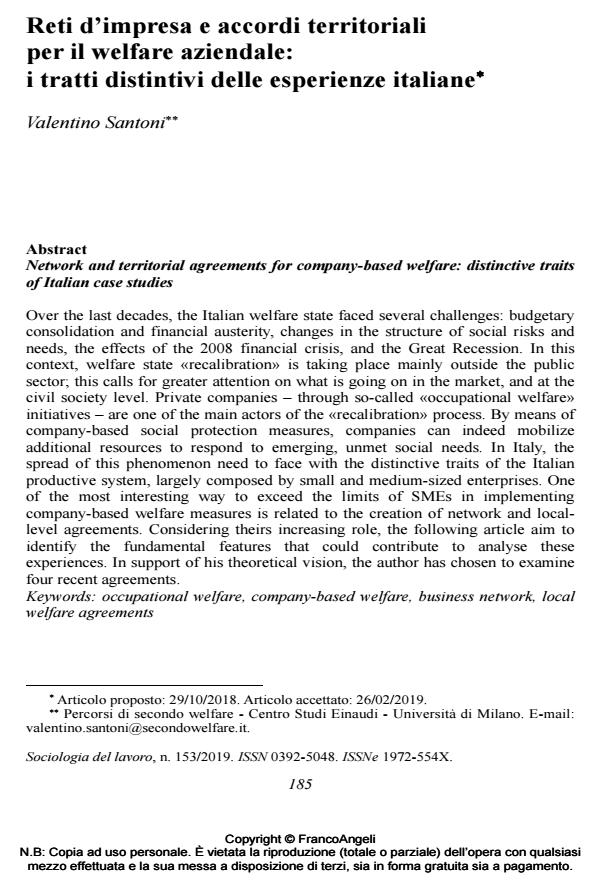Network and territorial agreements for company-based welfare: distinctive traits of Italian case studies
Journal title SOCIOLOGIA DEL LAVORO
Author/s Valentino Santoni
Publishing Year 2019 Issue 2019/153
Language Italian Pages 17 P. 185-201 File size 373 KB
DOI 10.3280/SL2019-153011
DOI is like a bar code for intellectual property: to have more infomation
click here
Below, you can see the article first page
If you want to buy this article in PDF format, you can do it, following the instructions to buy download credits

FrancoAngeli is member of Publishers International Linking Association, Inc (PILA), a not-for-profit association which run the CrossRef service enabling links to and from online scholarly content.
Over the last decades, the Italian welfare state faced several challenges: budgetary consolidation and financial austerity, changes in the structure of social risks and needs, the effects of the 2008 financial crisis, and the Great Recession. In this context, welfare state «recalibration» is taking place mainly outside the public sector; this calls for greater attention on what is going on in the market, and at the civil society level. Private companies - through so-called «occupational welfare» initiatives - are one of the main actors of the «recalibration» process. By means of company-based social protection measures, companies can indeed mobilize additional resources to respond to emerging, unmet social needs. In Italy, the spread of this phenomenon need to face with the distinctive traits of the Italian productive system, largely composed by small and medium-sized enterprises. One of the most interesting way to exceed the limits of SMEs in implementing company-based welfare measures is related to the creation of network and local-level agreements. Considering theirs increasing role, the following article aim to identify the fundamental features that could contribute to analyse these experiences. In support of his theoretical vision, the author has chosen to examine four recent agreements.
Keywords: Occupational welfare, company-based welfare, business network, local welfare agreements
- Mercato del welfare aziendale, provider e nuove opportunità occupazionali Franca Maino, Federico Razetti, Valentino Santoni, in SOCIOLOGIA DEL LAVORO 155/2019 pp.137
DOI: 10.3280/SL2019-155007
Valentino Santoni, Reti d’impresa e accordi territoriali per il welfare aziendale: i tratti distintivi delle esperienze italiane in "SOCIOLOGIA DEL LAVORO " 153/2019, pp 185-201, DOI: 10.3280/SL2019-153011